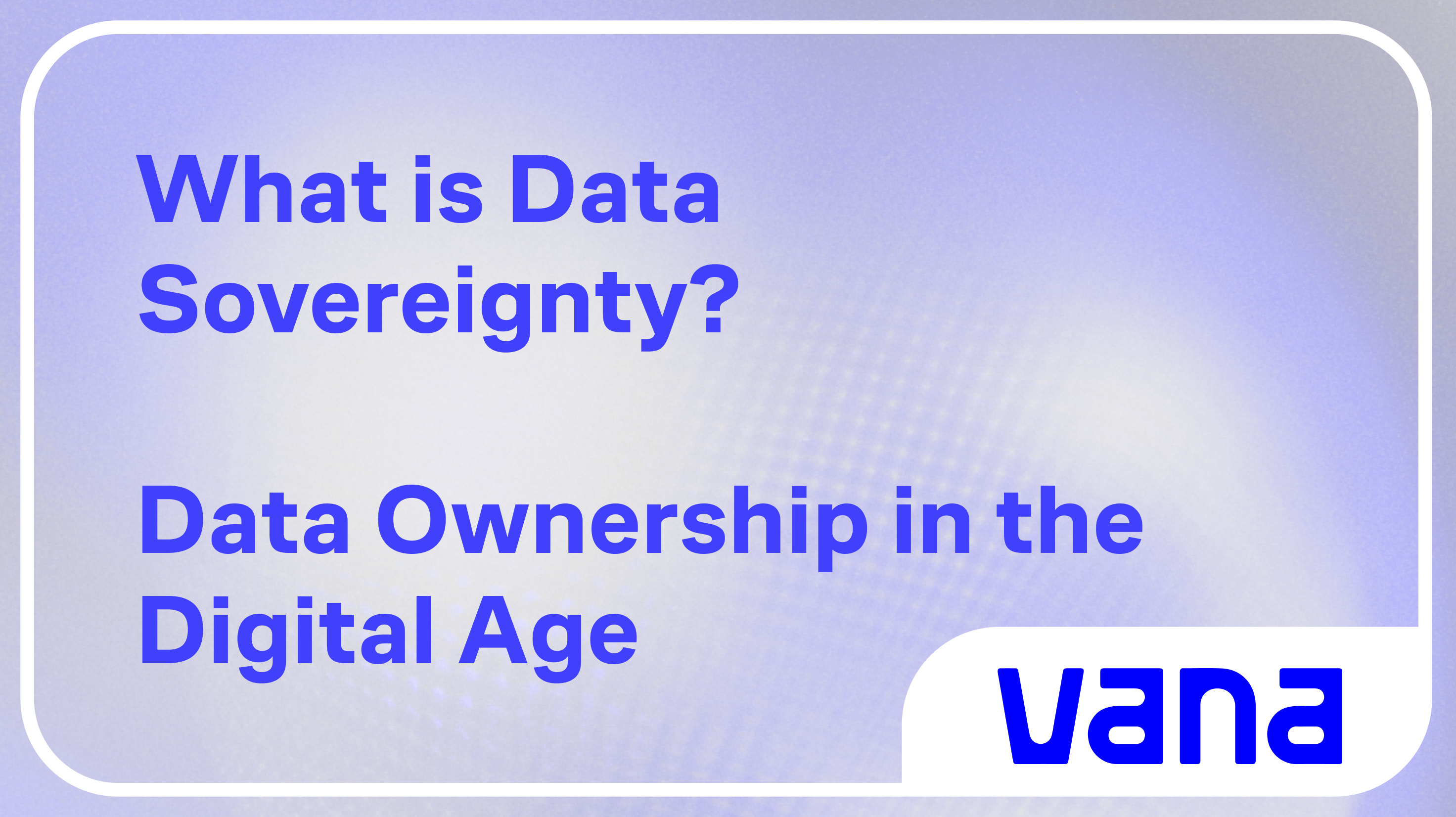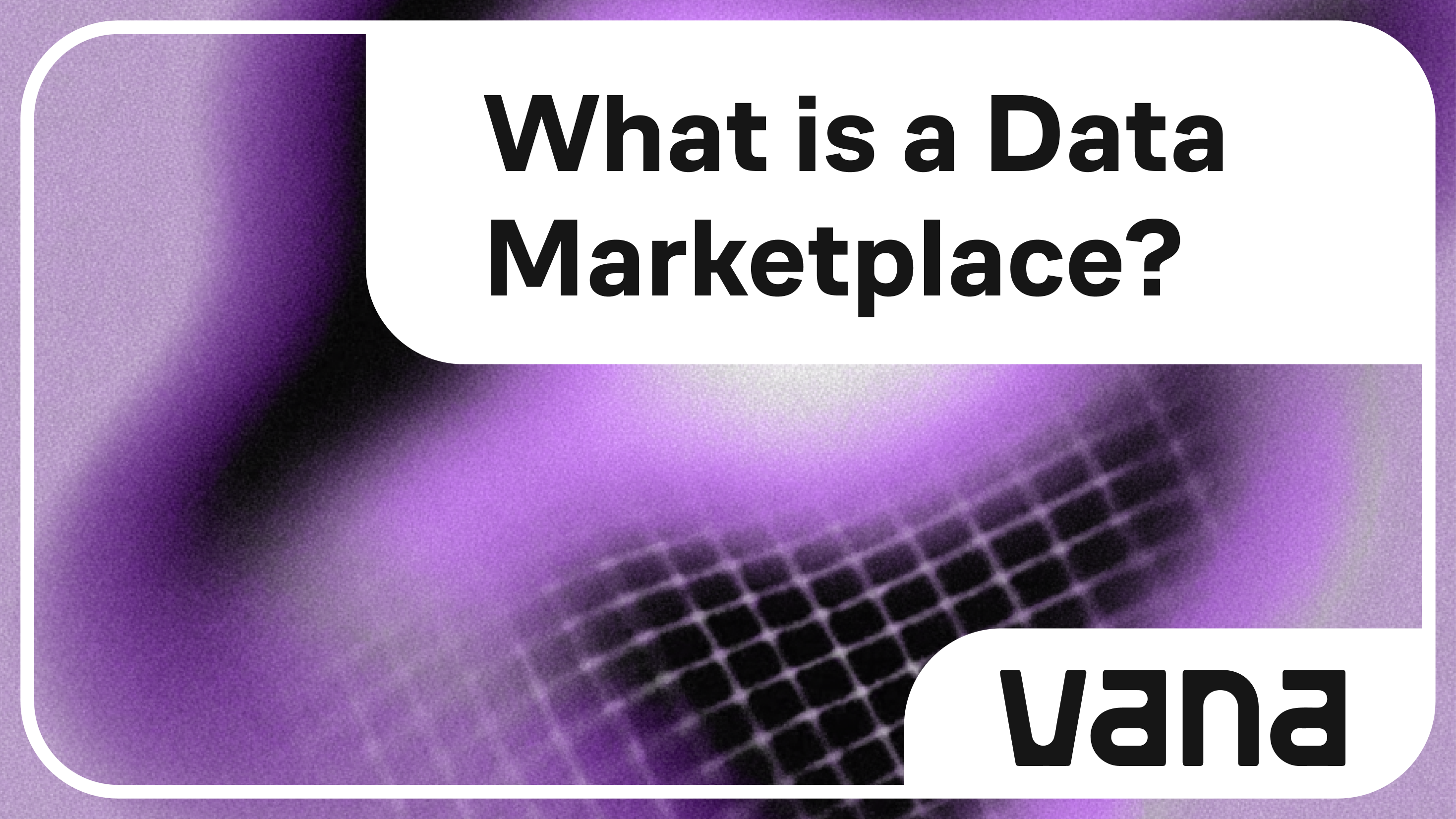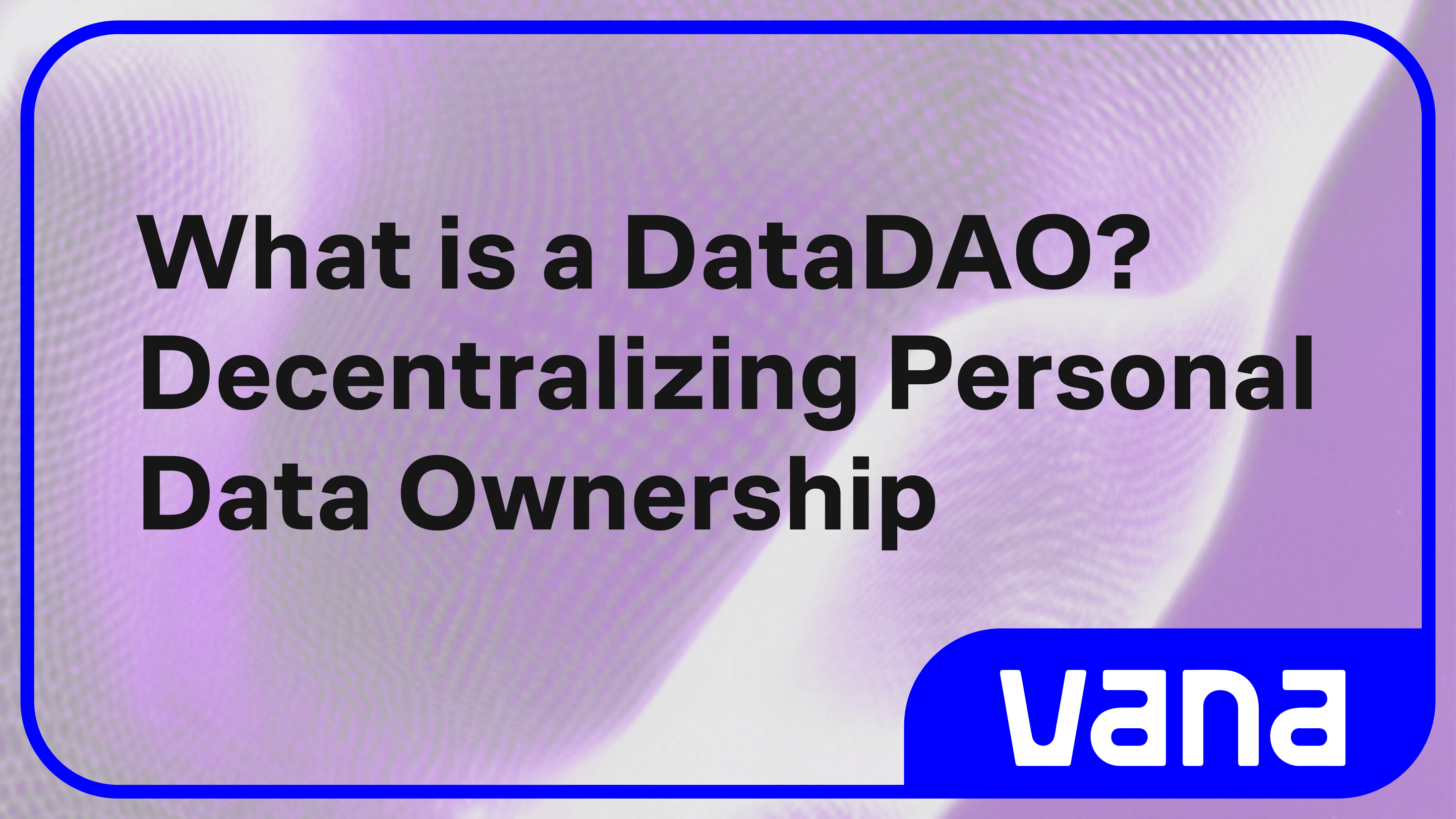What Data Do Social Platforms Collect, and How Can You Reclaim It?
Quick Takeaways
- Major platforms (TikTok, Instagram, Facebook, Google) log profile data, content, interactions, device IDs, location, and in some cases biometric signals—fueling engagement algorithms and targeted ads.
- TikTok’s scope over data access is broad but comparable to peers; debates often focus on who can access that data and governance.
- Google’s cross-service ecosystem (Search, YouTube, Maps, Android) enables especially deep tracking of queries, locations, and web activity.
- You can download your data, adjust privacy settings, block trackers with VPNs, and use privacy-first tools like the Vana App to take back control.
Introduction
If you’re asking what data does TikTok collect or what data does Google collect, you’re really asking a bigger question about how the modern internet works. Nearly every large platform gathers extensive, granular information about you, what you watch, where you are, which devices you use, then turns that into personalized feeds and precision ads.
This guide distills what data various platforms collect, why they collect it, and concrete steps to reclaim control as the end user. We’ll keep things actionable: where to download your data, which settings matter most, and which privacy tools actually reduce tracking..
Why Platforms Collect So Much Data
Data powers everything: personalization, ad targeting, feature development, and AI.
- Personalization & engagement. Every like, view, dwell time signal, and search term helps rank content in feeds (e.g., TikTok’s For You), maximizing time-on-app and what app developers call “stickiness”.
- Targeted ads. Detailed profiles such as demographics, interests, location, purchase intent let advertisers reach micro-audiences and retarget you after visiting a site, via pixels and Software Development Kits (SDKs).
- Product & AI. Aggregate behavior trains algorithms (recommendations, moderation, vision/voice features) and informs roadmaps. The result is a perpetual loop: more use → more data → more accurate models.
- Off-platform reach. Cookies, pixels, and app SDKs extend tracking well beyond the app itself, stitching together browsing, app usage, and location into a marketable profile.
In short: your activity is the fuel for the experience you enjoy and the ads that fund it.
What Data Does TikTok Collect?
TikTok captures what you provide (name, age, email/phone), what you create (videos, captions, DMs), your behavior (views, dwell time, taps, searches), device/technical signals (model, OS, IP, carrier), location (GPS if granted; otherwise inferred via IP/SIM), contacts (if you allow), and references to biometric identifiers (face/voiceprints) for features and safety.
Two key realities:
- Comparable scope. Researchers note TikTok’s data appetite is similar to other social apps; it’s not necessarily more invasive than Facebook in quantity.
- Governance concerns. Debates often center on access and oversight (e.g., geopolitical risk), not just collection.
What to do: Audit your permissions (especially location, contacts, microphone), minimize background access, and periodically download your archive to see what’s stored.
What Data Does Instagram Collect?
Instagram logs account details, media and metadata (timestamps, locations), every interaction (views, likes, saves, follows, ad clicks), device/network info, location (GPS/IP), contacts if uploaded, and payments for shopping features. Data often flows across the greater Meta (FB, IG & extended) properties to power combined targeting and personalization. PIRG puts it bluntly: Instagram “collects data on just about everything you do on the app” and offers a Download Your Information tool so you can see it.
What to do:
- Run Privacy Checkup, set posts to Friends/Private, and limit discoverability (phone/email lookups).
- Review Ad Preferences; disable partner-based personalization where possible.
- Revoke old app connections and download your IG data for an eye-opening audit.
What Data Does Facebook Collect?
Facebook aggregates profile facts, posts/DMs, friends/graph, all engagement, device and precise location, payments, plus extensive off-Facebook activity via pixels, cookies, and SDKs, enabling retargeting and lookalike audiences. The Cambridge Analytica episode underscored how secondary access and misuse can occur, even when a platform claims not to “sell” your personal data directly.
What to do:
- Use Off-Facebook Activity to view/clear off-site events and disconnect future associations.
- Lock down visibility (timeline, friends, tagging) and limit location.
- Prune old posts via Manage Activity; remove stale third-party app access.
What Data Does Google Collect?
Beyond social, Google likely has the deepest picture thanks to its breadth: search queries, YouTube watch/search history, web & app activity (including Chrome sync if enabled), location history (GPS/Wi-Fi/cell), device identifiers, voice commands (Assistant), and third-party tracking via Ads/Analytics on millions of sites. Google Takeout lets you export it all for review.
What to do:
- Run Privacy Checkup; pause or auto-delete Web & App Activity, Location History, YouTube History.
- Turn off Ad Personalization; use private search to avoid query profiling.
- In Chrome, restrict third-party cookies or consider privacy-centric browsers.
How Social Data Is Mined and Used
- Algorithms & AI. Your interactions train ranking and moderation at scale; aggregate photos, text, and audio fuel vision and language models.
- Targeted ads. Profiles build micro-segments, retargeting pools, and lookalikes; pixels tie off-site browsing to in-app ads.
- Behavior shaping. Feeds optimize for attention; deep profiling can enable persuasion risks and filter bubbles.
- Scraping & brokers. Public info harvested at scale and data broker markets can repurpose your data into datasets for AI and marketing far beyond original use.
How to Reclaim Control of Your Data
1) Request & Download Your Data
Seeing your data is the first step to controlling it:
- Instagram/Facebook: Download Your Information (posts, messages, ad interactions, more).
- TikTok: Request your data within the app.
- Google: Takeout (Search, Maps, YouTube, Photos, Gmail, Drive) for a comprehensive archive.
2) Tighten Privacy Settings & Permissions
- Permissions: Disable precise location, contacts, background refresh unless truly needed; restrict microphone/camera to on-use only.
- Meta/Instagram: Set stricter defaults; review Ad Preferences and Off-Facebook Activity settings.
- Google: Pause/auto-delete histories, turn off Ad Personalization, review Assistant audio settings.
- Mobile OS: iOS App Tracking Transparency; Android opt-out of ad personalization and reset ad ID.
3) Delete What You Don’t Need
- Prune old posts, sensitive profile fields, and third-party app connections.
- Remove dormant accounts; use bulk-delete tools where available.
- Smaller footprint = fewer data points to mine or leak.
4) Use Privacy Tools
- Tracker blockers: uBlock Origin, Privacy Badger, Ghostery (blocks trackers, offers private search).
- VPN: Masks IP and encrypts traffic, reducing location and network-level signals available to apps/sites.
- Private search: DuckDuckGo or Ghostery Private Search to avoid query profiling.
- Encrypted messaging/email: Signal; Proton for email.
- Containers: Browser isolation (e.g., Facebook Container) to prevent cross-site stitching.
5) Reclaim Your Data with the Vana App
Turn scattered platform data into something you control and benefit from:
- Own & unify your data: Link your favorite services—like Spotify, Instagram, LinkedIn, and Netflix—to the Vana App to bring all your data sources together in one secure, user-owned hub (stored in your Google Drive).
- Build your VIBE: Create a living profile from the data you choose to connect, powering more personal, user-owned AI experiences.
- Decide how it’s used: Contribute to community-governed DataDAOs (or don’t), set permissions, and shape training uses.
- Earn as you participate: Gain VanaXP and tap into community rewards designed for contributors and early adopters.
Available now: iOS & Android, invite-driven rollout; join and manage sources from one place.
Conclusion
The deal is clear: rich experiences in exchange for rich data. TikTok, Instagram/Facebook, and Google collect granular, continuous signals to drive algorithms and ads. Yet you’re far from powerless. Start by seeing what’s held on you (downloads), limiting fresh collection (permissions and privacy settings), shrinking old exposure (deletions), and blunting surveillance (blockers, VPN, private search). Then, where feasible, migrate slices of your digital life to privacy-first or decentralized services.
Treat privacy like hygiene, a routine, not a one-off. Check settings after app updates, rotate permissions, and revisit archives. The more you assert choice, the more you shift the balance from platforms owning your story to you owning it. Web3’s trajectory hints at a future where control is the default; until then, the steps above let you enjoy modern apps without surrendering more than necessary.
FAQs
1) How do I see what data platforms have collected about me?
Use Instagram/Facebook Download Your Information, TikTok’s data export, and Google Takeout. Reviewing these archives is the fastest way to understand and then clean up (if you want to) your footprint.
2) Can I stop data collection entirely?
Not if you keep using the service. But you can minimize it: restrict permissions, disable histories/ad personalization, block trackers, and avoid linking contact lists. Full stop requires account deletion.
3) What is digital privacy?
Your ability to control what personal information is gathered, how it’s used, and with whom it’s shared. across apps, devices, and the web.
4) What is social media data scraping?
Automated harvesting of public data at scale. Aggregation can create invasive dossiers usable for spam, profiling, or AI training without meaningful consent, another reason to lock profiles and limit public details.
5) Does TikTok collect more than others?
Evidence suggests TikTok’s scope is comparable to other large platforms; concerns often hinge on access/governance rather than sheer quantity.









